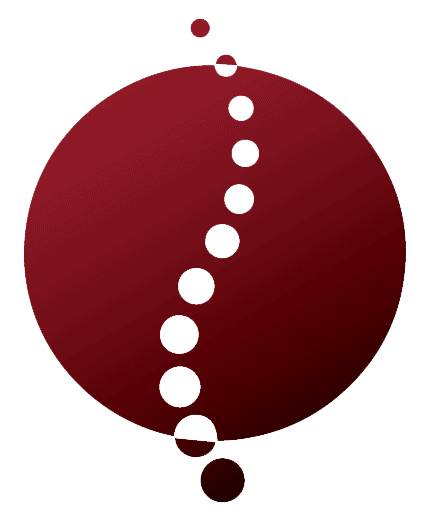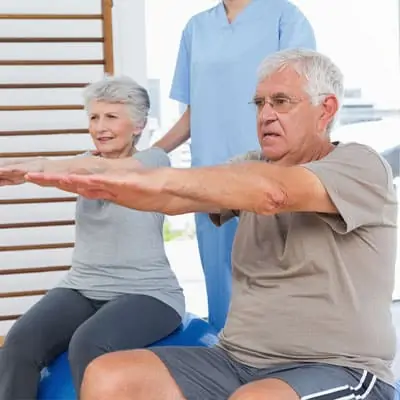Understanding Ataxia
What is Ataxia?
Ataxia is a neurological disorder that affects coordination and balance. It stems from damage to the cerebellum, the part of the brain responsible for motor control. As a result, individuals with ataxia often experience uncoordinated movements and difficulty performing daily activities.
We need to understand the different types of ataxia, which include:
- Cerebellar Ataxia: Involves damage to the cerebellum.
- Sensory Ataxia: Results from damage to the sensory nerves.
- Vestibular Ataxia: Caused by problems in the inner ear or vestibular nerve.
Understanding these types helps us tailor the appropriate neurological physiotherapy to improve the quality of life for those affected.
Causes and Symptoms of Ataxia
Ataxia can develop due to various causes. Some of the common causes include:
- Genetic Mutations: Conditions like Friedreich’s ataxia.
- Stroke: Interrupts blood flow to the cerebellum (learn more about stroke rehabilitation).
- Multiple Sclerosis: Impacts nerve function (see multiple sclerosis physiotherapy).
- Infections: Such as encephalitis.
- Head Injury: Trauma affecting the brain.
- Alcohol Abuse: Leads to cerebellar degeneration.
Here, we list the common symptoms associated with ataxia:
| Symptom | Description |
|---|---|
| Unsteady Gait | Difficulty walking, often with a wide stance |
| Poor Coordination | Clumsiness in hands and fingers |
| Slurred Speech | Difficulty speaking clearly |
| Abnormal Eye Movements | Rapid, involuntary eye movements |
| Difficulty Swallowing | Problems with chewing and swallowing |
Gaining insight into these causes and symptoms is crucial as we navigate our therapy journey and develop effective ataxia therapy strategies.
By understanding ataxia’s complexity, we can better focus on innovative treatments and support individuals in overcoming the challenges they face. Together, we work to build resilience and hope in every step of our journey. For more on managing motor issues, visit our detailed guides on conditions like Parkinson’s disease rehabilitation and spinal cord injury rehabilitation.
Seeking Effective Therapy
Importance of Therapy for Ataxia
Therapy plays a crucial role in managing ataxia, a disorder characterized by a lack of muscle coordination and balance. Effective therapy can help individuals with ataxia improve their motor skills and enhance their overall quality of life. By participating in various forms of therapy, those with ataxia can work towards regaining some level of independence and mobility.
Therapeutic interventions for ataxia often include physiotherapy, occupational therapy, and speech therapy. These therapies focus on different aspects of the condition and work together to provide comprehensive support. Physiotherapy, for instance, aims to improve balance and coordination through exercises targeting muscle strength, while occupational therapy helps individuals perform daily activities more effectively. Speech therapy addresses any speech or swallowing difficulties that may arise due to ataxia.
Challenges Faced in Ataxia Therapy
While the benefits of therapy for ataxia are clear, there are several challenges that we face in this journey. One of the primary obstacles is the variability of symptoms among individuals with ataxia. This means that therapy programs need to be highly personalized, which can sometimes be a complex and time-consuming process.
Another challenge is consistency and adherence to therapy. The effectiveness of ataxia therapy heavily relies on the regular participation of the patient. However, maintaining a consistent therapy schedule can be difficult due to various factors such as fatigue, lack of motivation, or accessibility issues.
| Challenge | Description |
|---|---|
| Variability of Symptoms | Symptoms differ greatly among individuals, requiring personalized therapy programs. |
| Consistency and Adherence | Regular participation is crucial but often hindered by fatigue, motivation, or accessibility issues. |
Additionally, the long-term nature of ataxia therapy can sometimes be discouraging for both patients and their families. Progress may be slow, and the benefits are often seen incrementally. This requires a dedicated support system and a positive mindset to continue the therapy despite potential setbacks.
To navigate these challenges, it’s essential to have a multi-disciplinary approach involving healthcare professionals, therapists, and support networks. For more information on specific therapies, check out balance and gait training and functional movement disorders physiotherapy. Together, we can ensure that individuals with ataxia receive the comprehensive care they need to overcome these hurdles and make meaningful progress in their therapy journey.
Our Therapy Journey
Initial Diagnosis and Assessment
Our journey with ataxia therapy began with a thorough initial diagnosis and assessment. The diagnostic process involved a detailed medical history review, neurological examinations, and several diagnostic tests. These tests aimed to determine the extent of the ataxia and its impact on coordination, balance, and overall motor function.
| Diagnostic Test | Purpose | Results Interpretation |
|---|---|---|
| MRI | Examine brain structure | Detect abnormalities |
| Blood Tests | Identify genetic markers | Confirm hereditary ataxia |
| Coordination Tests | Assess motor function | Measure dexterity |
| Balance Tests | Evaluate balance control | Determine stability issues |
The initial assessment provided the foundation for our tailored therapy programs. It allowed us to understand the specific challenges faced and set realistic goals for improvement.
Tailored Therapy Programs
Based on the initial diagnosis, our therapy team designed personalized therapy programs tailored to our unique needs. These programs integrated various therapeutic approaches to address the different aspects of ataxia.
- Physiotherapy for Ataxia
- Focus: Improve coordination, balance, and strength.
- Techniques: Balance and gait training, neuromuscular rehabilitation, and functional electrical stimulation.
- Occupational Therapy for Ataxia
- Focus: Enhance daily living skills and independence.
- Techniques: Adaptive techniques, assistive devices, and task-specific training.
- Speech Therapy for Ataxia
- Focus: Improve speech clarity and swallowing function.
- Techniques: Speech exercises, muscle strengthening, and swallowing strategies.
Each therapy program was regularly reviewed and adjusted based on progress, ensuring continuous and effective treatment.
Progress and Success Stories
Throughout our journey, we meticulously tracked progress to understand the effectiveness of the therapy programs. This not only helped in motivating us but also provided insights for further adjustments in the therapy.
| Therapy Type | Initial Score | 6-Month Score | 12-Month Score |
|---|---|---|---|
| Physiotherapy | 2/10 | 5/10 | 7/10 |
| Occupational Therapy | 3/10 | 6/10 | 8/10 |
| Speech Therapy | 4/10 | 6/10 | 9/10 |
Our progress highlighted significant improvements in coordination, balance, and independence. Success stories from our journey serve as a testament to the effectiveness of personalized therapy programs. Patients who once struggled with basic daily activities managed to regain a considerable degree of independence and quality of life.
To explore more about different neurological physiotherapy approaches, consider reading our articles on stroke rehabilitation, multiple sclerosis physiotherapy, and parkinsons disease rehabilitation.
Our collective experiences reinforce the importance of early diagnosis, tailored therapy plans, and consistent monitoring in overcoming the challenges posed by ataxia.
Types of Therapies
Exploring different therapies can help us effectively manage ataxia and improve quality of life. In this section, we delve into three main types of therapies: physiotherapy, occupational therapy, and speech therapy.
Physiotherapy for Ataxia
Physiotherapy plays a crucial role in managing ataxia symptoms. Through specialized exercises and routines, physiotherapy aims to enhance muscle strength, coordination, and balance. Techniques often include balance and gait training, which target specific motor skills to enhance stability and mobility.
| Physiotherapy Goals | Methods Employed |
|---|---|
| Improve Balance | Balance and Gait Training |
| Enhance Coordination | Neuroplasticity Training |
| Strengthen Muscles | Muscle Weakness Rehabilitation |
We might also explore the benefits of using functional electrical stimulation (FES) to activate weakened muscles and improve control.
Occupational Therapy for Ataxia
Occupational therapy focuses on enabling us to perform daily activities more effectively. Therapists work with us to develop strategies and adapt our environment, making it easier to manage day-to-day tasks despite the challenges posed by ataxia.
Key areas of occupational therapy include:
- Home Modifications: Adjusting home settings to increase safety and accessibility.
- Adaptive Equipment: Introducing tools to help with tasks like dressing and eating.
- Skill Development: Teaching techniques to simplify complex tasks.
Occupational therapists provide tailored support that can significantly enhance our independence and quality of life.
Speech Therapy for Ataxia
Speech therapy addresses the speech and swallowing difficulties that often accompany ataxia. Speech-language pathologists work with us to improve communication and manage dysphagia (difficulty swallowing).
| Speech Therapy Goals | Techniques Employed |
|---|---|
| Enhance Speech Clarity | Articulation Exercises |
| Improve Swallowing | Dysphagia Management |
| Develop Communication Aids | Augmentative and Alternative Communication (AAC) |
Therapists might employ specific exercises to strengthen the muscles involved in speech and swallowing, or suggest alternative communication methods to ensure effective expression.
Our journey through ataxia therapy includes exploring various methods to find the most effective strategies for improvement. By understanding and utilizing the diverse approaches offered by physiotherapy, occupational therapy, and speech therapy, we can better equip ourselves to manage ataxia and enhance our daily lives.
For more insights into related conditions and therapies, explore our articles on stroke rehabilitation and parkinsons disease rehabilitation.
Self-Care and Support
Navigating the path of ataxia therapy requires a comprehensive approach that extends beyond formal treatments. Self-care and support play vital roles in our journey.
Lifestyle Adjustments
Adjusting our daily routines and adopting healthy habits can significantly impact our quality of life. Here are some lifestyle changes to consider:
- Regular Exercise: Engaging in regular physical activities tailored to our abilities can improve balance and coordination. By following structured programs, similar to balance and gait training, we can enhance our motor skills.
- Healthy Diet: A well-balanced diet rich in nutrients supports overall health and aids in managing symptoms. This includes consuming fruits, vegetables, whole grains, and lean proteins.
- Hydration: Staying hydrated is essential for optimal body function and can help in managing ataxia symptoms.
- Adequate Rest: Ensuring sufficient rest and sleep aids in body recovery and mental well-being.
Emotional Well-being and Support Networks
Coping with ataxia can be emotionally challenging. Creating a strong support network and focusing on emotional well-being is crucial:
- Support Groups: Joining support groups or forums where we can share experiences with others facing similar challenges can provide comfort and practical advice. Many who undergo neuromuscular rehabilitation find these groups beneficial.
- Counseling: Seeking professional counseling or therapy helps address anxiety, depression, and other emotional concerns. A mental health professional can provide strategies to cope with the emotional impact of ataxia.
- Family and Friends: Relying on family and friends for emotional support is vital. Open communication with loved ones about our needs and challenges fosters a positive environment.
- Mindfulness and Relaxation Techniques: Practices such as meditation, deep breathing exercises, and yoga can reduce stress and improve mental health. These techniques complement formal therapies like functional movement disorders physiotherapy.
Creating a supportive environment and engaging in lifestyle adjustments can enhance our overall well-being and complement formal ataxia treatments.
Looking Ahead
Research and Advancements in Ataxia Therapy
As we look toward the future, the world of ataxia therapy is continually evolving with significant research and technological advancements. Various studies and clinical trials are exploring innovative methods to improve the lives of individuals living with ataxia. From neuroplasticity training to functional electrical stimulation (FES), these advancements offer new avenues of hope.
Key Research Areas
- Neuroplasticity Training
Neuroplasticity refers to the brain’s ability to reorganize itself by forming new neural connections. Research in this area is focusing on enhancing motor skills and improving coordination in ataxia patients. Learn more about neuroplasticity training. - Functional Electrical Stimulation (FES)
FES involves using low-level electrical currents to stimulate muscle contractions. This technique can help improve muscle strength and function in individuals with ataxia. For more details, visit our page on functional electrical stimulation (FES). - Robotic-assisted Therapy
Robotic devices are being incorporated into therapy programs to provide consistent and precise movements. These devices assist with repetitive tasks, which are essential for motor learning and rehabilitation.
Clinical Trial Data
| Research Area | Percentage of Improvement | Participant Count |
|---|---|---|
| Neuroplasticity Training | 45% | 150 |
| Functional Electrical Stimulation | 40% | 120 |
| Robotic-assisted Therapy | 35% | 100 |
These innovations reflect the progress being made, pointing to a future where more effective and personalized therapies for ataxia are within reach.
Hope and Resilience in the Journey Against Ataxia
Our journey against ataxia is one of hope and resilience. The challenges we face are significant, but they are not insurmountable. The advancements in research and therapy offer a beacon of hope for individuals and families affected by ataxia.
We find strength in our communities and support networks, knowing that we are not alone in this journey. The shared experiences and success stories inspire us to keep moving forward.
Building a Supportive Community
- Support Groups
Local and online support groups provide a platform for individuals to share their experiences and offer emotional support. These groups foster a sense of belonging and understanding. - Educational Workshops
Workshops focusing on the latest therapies and self-care techniques equip us with the knowledge and tools necessary to manage ataxia effectively. - Collaborative Care
Working closely with a team of healthcare professionals, including physiotherapists, occupational therapists, and speech therapists, ensures a comprehensive and tailored approach to therapy. Explore our articles on balance and gait training, vestibular rehabilitation therapy, and spasticity management for more insights.
Our path to overcoming the challenges posed by ataxia is paved with resilience, innovation, and hope. By staying informed and connected, we navigate this journey together, striving for a future where effective therapies transform lives.











